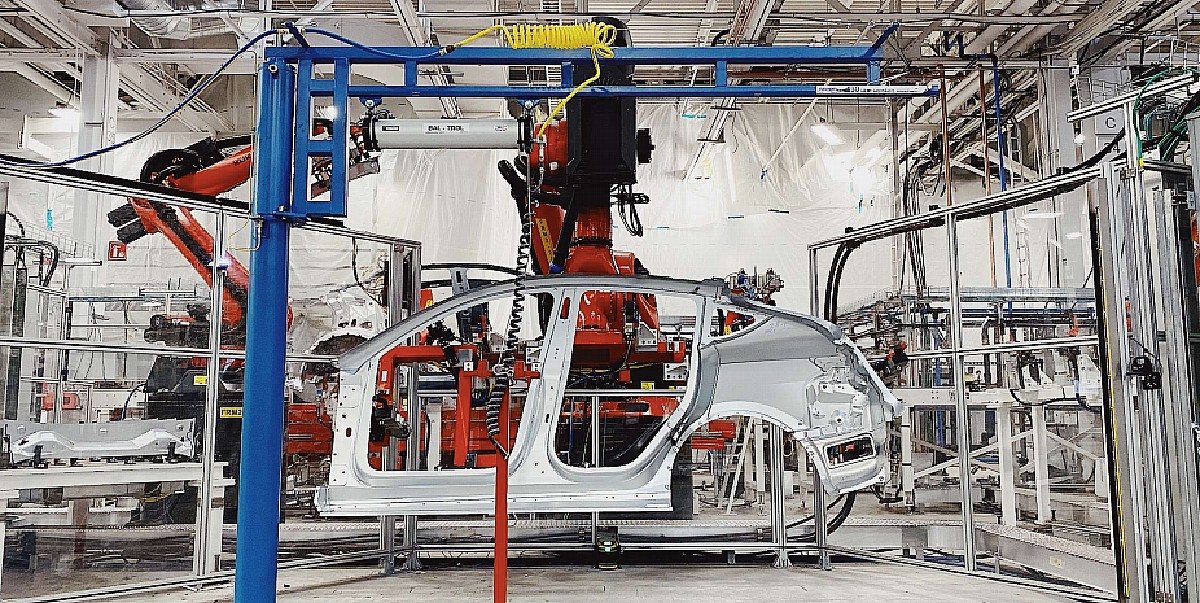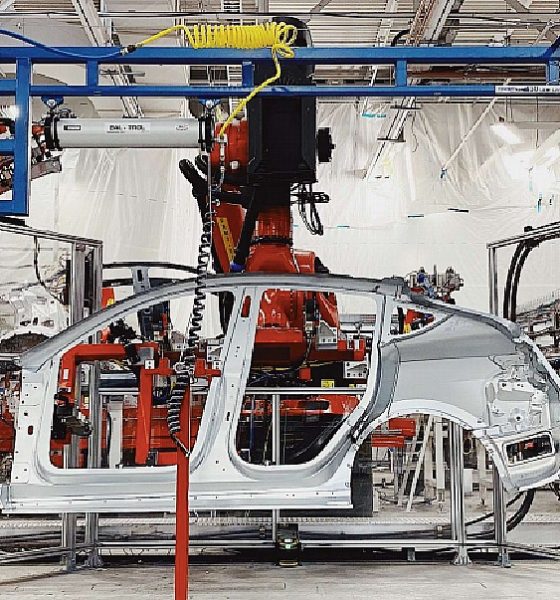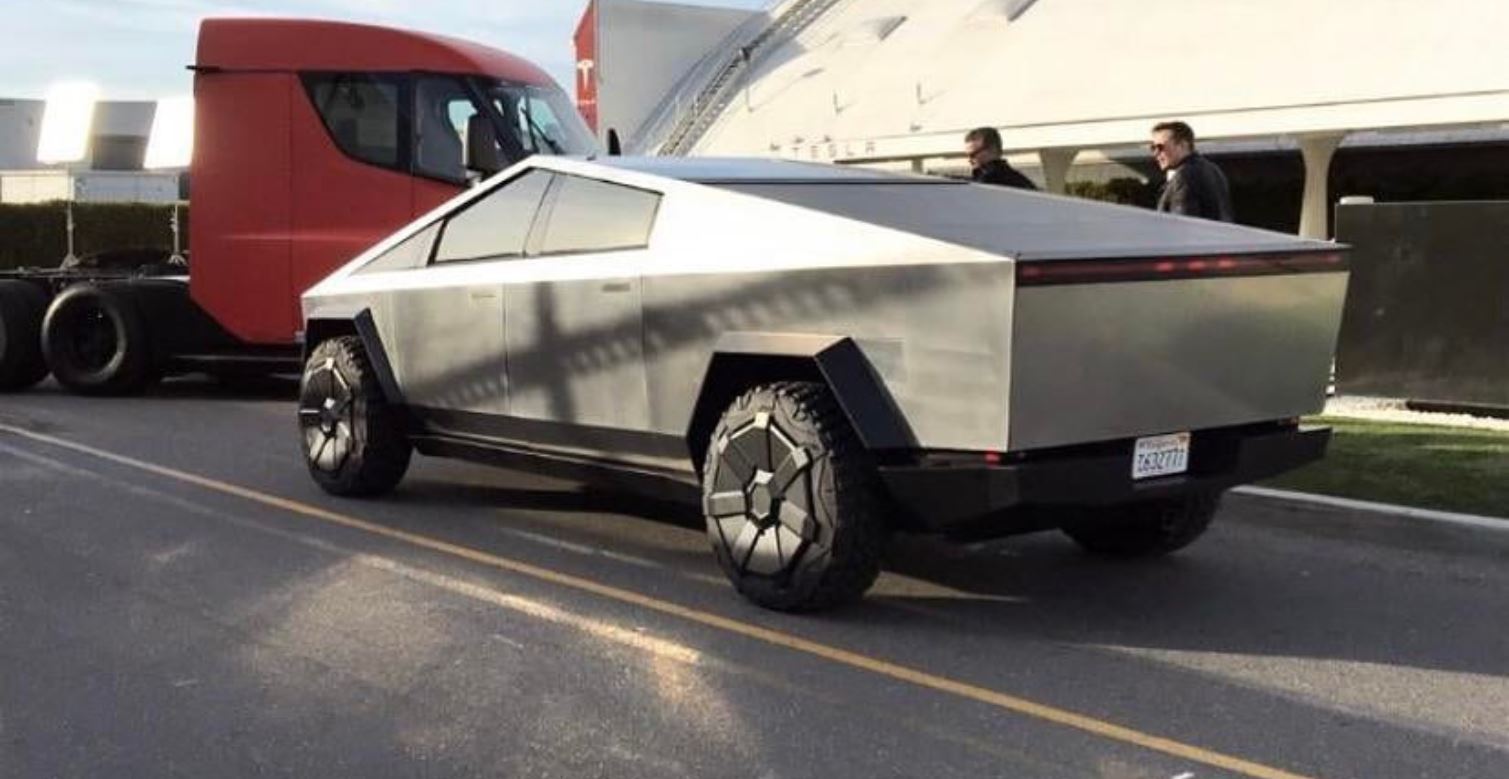

Energy
Tesla is growing its workforce as rival carmakers cut jobs to catch up in the EV race
Tesla has a ton of things in the pipeline that will keep it busy for the foreseeable future — from building Giga Berlin, ramping the production of the Model Y in the US and China, rolling out the upcoming Cybertruck, Semi, and new Roadster, to further improving its core battery technology. In order to achieve these goals, Tesla has been on a hiring spree to acquire talent to boost its current workforce. In contrast, other carmakers have been cutting jobs as they start a difficult transition towards sustainable transportation.
“It’s hard to think of another company that has more exciting product and technology roadmap. So super-fired up about where Tesla will be in the next 10 years. If you look back 10 years from today to 2010, we will produce approximately 1,000 times more cars in 2020 than we produced in 2010… and we have also Solarglass and solar retrofit and Powerwall, Powerpack, all those things too. So where we will be in 10 years, very excited to consider the prospect,” Tesla chief executive and co-founder Elon Musk said during the company’s Q4 2019 earnings call.
Tesla Continues Its Push
Elon Musk has turned himself into a solar salesman and has kicked off 2020 by setting the stage for a Solarglass Roof installation ramp in the United States. Musk has also mentioned bringing the Solarglass Roof to other markets such as China and Europe. Aside from looking for roofers, it is also partnering with homebuilders and other residential industry players. Giga New York, where solar panels and other components are made, is also looking to add more employees to its workforce.
Tesla is also seemingly testing the waters to build Giga Texas, where it can potentially ramp the production of the Cybertruck and help its other facilities scale battery production. Amidst all this, Elon Musk has also announced that he will be hosting an AI hackathon to fish for talents who can potentially help accelerate the rollout of its Full Self-Driving suite.

Across the pond, Tesla is busy trying to prepare an industrial property in Grunheide to begin the construction of Giga Berlin, which is poised to go online next year. This Tesla Gigafactory in Europe aims to produce 10,000 vehicles per week and it will need a 12,000-strong workforce to do that. Giga Berlin is currently looking for people to help them in construction, engineering, manufacturing, and operations.
In China, Giga Shanghai is aiming to ramp production of the locally-made Model 3, while starting its program for the Model Y. Tesla is even looking for designers that would help it produce a new vehicle Tesla for the local market and the rest of the globe. Job openings for Tesla China skyrocketed 118% between October last year to February 2020 and have seen a 376% jump in the past year, according to Thinknum Alternative Data’s report. While the coronavirus outbreak in China slowed down job postings recently, the overall hiring activity of the Palo Alto, California-based carmaker is on the upswing across the globe.
Tesla is undeniably the leader in electric vehicles. Through the years, it has been trying to perfect its manufacturing processes, car software technology, and battery capacity. In fact, a recent Model 3 teardown by Nikkei Business Publications revealed that Tesla could be six years ahead of the competition on the hardware front. On the battery front, Consumer Reports recently validated its advantage over other carmakers, and we’re yet to hear the compelling story that will blow people’s minds Elon Musk promised come Battery Day in April.
Tesla Competitors Trying To Catch Up, But That’s All They Can Do — Try
While Tesla keeps on looking for new hires to help it bring its product and technology roadmap into fruition, other carmakers have been cutting jobs. As legacy automakers try to catch up on the electrification of its fleet, most of them need to lay off workers to free funds that they can use for research and development of technology that can come close to what Tesla has had for years.
Last December 2019, Daimler and Audi announced that it will cut 10,000 jobs as the major shift in vehicle technology happens. Audi is also getting rid of 9,500 jobs to free funds for its electrification efforts. Bloomberg News compiled data that revealed carmakers in Germany, the United States, and the United Kingdom are eliminating around 80,000 jobs as they reassess their current workforce in an era of electrification. In China, electric vehicle startup NIO also retrenched about 20% of its workforce. Asian automotive leaders Toyota and Honda have also cut costs to bolster research and development of electric cars and ride-sharing programs.
Tesla has had its own challenges but the company is definitely thriving now, as evidenced by its tangible lead in the EV space. For Q4 2019, Tesla posted revenue amounting to $7.38 billion, beating Wall Street’s estimates. Maintaining profitability, it was able to generate $1.1 billion of free cashflow in 2019. Its stock price also saw a meteoric rise recently propelling its market cap value to $169.16 billion on Feb. 19.
The striking contrast affecting the labor force of Tesla and other carmakers paints the difficult task of traditional automakers who seemed to have been caught flat-footed in a rapidly changing auto industry. Not that these giant car brands do not have the money, but Tesla is just way, way ahead in electrification. With all the activities on the side of Tesla, perhaps legacy carmakers should indeed be frightened.

Cybertruck
Tesla updates Cybertruck owners about key Powershare feature

Tesla is updating Cybertruck owners on its timeline of a massive feature that has yet to ship: Powershare with Powerwall.
Powershare is a bidirectional charging feature exclusive to Cybertruck, which allows the vehicle’s battery to act as a portable power source for homes, appliances, tools, other EVs, and more. It was announced in late 2023 as part of Tesla’s push into vehicle-to-everything energy sharing, and acting as a giant portable charger is the main advantage, as it can provide backup power during outages.
Cybertruck’s Powershare system supports both vehicle-to-load (V2L) and vehicle-to-home (V2H), making it flexible and well-rounded for a variety of applications.
However, even though the feature was promised with Cybertruck, it has yet to be shipped to vehicles. Tesla communicated with owners through email recently regarding Powershare with Powerwall, which essentially has the pickup act as an extended battery.
Powerwall discharge would be prioritized before tapping into the truck’s larger pack.
However, Tesla is still working on getting the feature out to owners, an email said:
“We’re writing to let you know that the Powershare with Powerwall feature is still in development and is now scheduled for release in mid-2026.
This new release date gives us additional time to design and test this feature, ensuring its ability to communicate and optimize energy sharing between your vehicle and many configurations and generations of Powerwall. We are also using this time to develop additional Powershare features that will help us continue to accelerate the world’s transition to sustainable energy.”
Owners have expressed some real disappointment in Tesla’s continuous delays in releasing the feature, as it was expected to be released by late 2024, but now has been pushed back several times to mid-2026, according to the email.
Foundation Series Cybertruck buyers paid extra, expecting the feature to be rolled out with their vehicle upon pickup.
Cybertruck’s Lead Engineer, Wes Morrill, even commented on the holdup:
As a Cybertruck owner who also has Powerwall, I empathize with the disappointed comments.
To their credit, the team has delivered powershare functionality to Cybertruck customers who otherwise have no backup with development of the powershare gateway. As well as those with solar…
— Wes (@wmorrill3) December 12, 2025
He said that “it turned out to be much harder than anticipated to make powershare work seamlessly with existing Powerwalls through existing wall connectors. Two grid-forming devices need to negotiate who will form and who will follow, depending on the state of charge of each, and they need to do this without a network and through multiple generations of hardware, and test and validate this process through rigorous certifications to ensure grid safety.”
It’s nice to see the transparency, but it is justified for some Cybertruck owners to feel like they’ve been bait-and-switched.
Energy
Tesla starts hiring efforts for Texas Megafactory
Tesla’s Brookshire site is expected to produce 10,000 Megapacks annually, equal to 40 gigawatt hours of energy storage.

Tesla has officially begun hiring for its new $200 million Megafactory in Brookshire, Texas, a manufacturing hub expected to employ 1,500 people by 2028. The facility, which will build Tesla’s grid-scale Megapack batteries, is part of the company’s growing energy storage footprint.
Tesla’s hiring efforts for the Texas Megafactory are hinted at by the job openings currently active on the company’s Careers website.
Tesla’s Texas Megafactory
Tesla’s Brookshire site is expected to produce 10,000 Megapacks annually, equal to 40 gigawatt hours of energy storage, similar to the Lathrop Megafactory in California. Tesla’s Careers website currently lists over 30 job openings for the site, from engineers, welders, and project managers. Each of the openings is listed for Brookshire, Texas.
The company has leased two buildings in Empire West Business Park, with over $194 million in combined property and equipment investment. Tesla’s agreement with Waller County includes a 60% property tax abatement, contingent on meeting employment benchmarks: 375 jobs by 2026, 750 by 2027, and 1,500 by 2028, as noted in a report from the Houston Business Journal. Tesla is required to employ at least 1,500 workers in the facility through the rest of the 10-year abatement period.
Tesla’s clean energy boom
City officials have stated that Tesla’s arrival marks a turning point for the Texas city, as it highlights a shift from logistics to advanced clean energy manufacturing. Ramiro Bautista from Brookshire’s economic development office, highlighted this in a comment to the Journal.
“(Tesla) has great-paying jobs. Not just that, but the advanced manufacturing (and) clean energy is coming to the area,” he said. “So it’s not just your normal logistics manufacturing. This is advanced manufacturing coming to this area, and this brings a different type of job and investment into the local economy.”
Energy
Tesla and Samsung SDI in talks over new US battery storage deal: report
The update was related by industry sources and initially reported by South Korean news outlets.

Recent reports have suggested that Tesla and Samsung SDI are in talks over a potential partnership to supply batteries for large-scale energy storage systems (ESS).
The update was related by industry sources and initially reported by South Korean news outlets.
ESS batteries to be built at Samsung’s Indiana plant
As noted in a report from Korea JoongAng Daily, the demand for energy storage systems has been growing rapidly in North America, thanks in no small part to the surge in AI investments across numerous companies. With this in mind, Tesla has reportedly approached Samsung SDI about a potential battery supply deal.
The deal is reportedly worth over 3 trillion Korean won (approximately $2.11 billion) and will span three years, according to The Korea Global Economic Daily. A battery supply deal with Samsung SDI could make sense for Tesla as the company already has a grid-scale battery, the Megapack, which is perfect for industrial use. Samsung SDI could simply supply cells for the EV maker.
Production of the batteries would reportedly take place at Samsung SDI’s joint venture factory with Stellantis in Indiana, which is currently under construction. Samsung SDI recently announced plans to use part of that plant’s EV lines to produce cells for ESS, with a targeted capacity of 30 GWh by the end of next year.
Tesla and Samsung’s partnership
At present, only a handful of manufacturers, including Korea’s LG Energy Solution, Samsung SDI, SK On, and Japan’s Panasonic, are capable of producing energy storage-scale batteries domestically in the United States. A Samsung SDI official issued a comment about the matter, stating, “Nothing has been finalized regarding cooperation with Tesla.”
The possible energy storage system deal adds another layer to Tesla’s growing collaboration with Samsung, which is already in line as a partner in the upcoming production of Tesla’s AI5 and AI6 chips. Early sample manufacturing of the AI6 is expected to begin in South Korea, with mass production slated for Samsung’s Texas-based Taylor foundry when it starts operations.
The AI6 chip will power Tesla’s next wave of high-volume projects, including the Optimus humanoid robot and the autonomous Cybercab service. Musk has called the partnership with Samsung a “real collaboration,” adding that he personally plans to “walk the line” at the Taylor facility to speed up progress.








